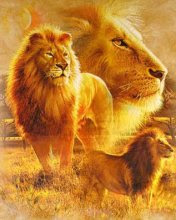
Kohan II retains its predecessor's unique gameplay while also making key changes that distinguish it both from the original and from any other real-time strategy games in the intervening years.
Kohan: Immortal Sovereigns was released in 2001, and though it wasn't a blockbuster success, many of those who actually played it loved it. Its particular take on real-time strategy focused on the strategic control of companies of troops and on eliminating much of the tedious micromanagement often associated with the genre. As such, the game proved to be an innovative change of pace from the conventions of real-time strategy. The sequel, Kohan II: Kings of War, retains its predecessor's unique gameplay while also making key changes that distinguish it both from the original and from any other RTS games in the intervening years. And while some of the changes streamline a slickly designed RTS model even further, they don't detract from this great game's own winning formula.
Kohan II's fantasy setting takes place long after the events of the first Kohan game. Naava Daishan is chasing after the remains of the Ceyah faction, who were the aggressors and losers of the first game. Led by Sebak, the Ceyah survivors escape from Naava's grasp and unleash a dark power upon Khaldun. The forces of humanity are on the brink of annihilation, and it's up to Naava and Jonas Teramun, a recently awakened Kohan with no memories, to unite the races of the land. The storyline is a little unoriginal for a fantasy setting, but it is enjoyable nonetheless, thanks to a few well-placed plot twists. The last mission is also quite fun and suitably climactic, although the game's ending is rather dull and disappointing. The single-player campaign spans 25 missions and should take anywhere from 15 hours to twice that long to complete, depending on your strategies and if you complete optional secondary objectives. At any rate, like its predecessor, the campaign in Kohan II is too scripted and suffers from weak artificial intelligence. Also, it'll be an absolute breeze for experienced RTS players at the default difficulty, and even hard difficulty won't be much of a challenge for the first half of the game. The missions are varied, though, and you'll get to play as each of the game's races at various parts in the campaign. You may or may not enjoy this aspect, because even though this lends some variety to the gameplay, you don't really get attached to any particular characters or their causes.
Kohan II features six playable races: human, haroun, drauga, gauri, undead, and shadow. Each race has its own unique units, buildings, and economic factors, such as reliances on particular types of resources over other types. These economic twists turn out to be what most differentiates the races from each other, because the respective military units are basically functional equivalents despite their aesthetic differences. Each race can also belong to a particular faction. There are five factions total (although not every race can choose from all of the factions) and each of these confers certain benefits. For example, the council faction reduces the cost of buildings by 10 percent. These factions allow you to further tailor the game to your play style, although the factions mainly come into play in skirmish or multiplayer matches since you can't choose your faction in the campaign. Overall, though the game's races and factions don't have a ton of personality to them, the various combinations can make for significant and interesting gameplay differences.
http://rapidshare.com/files/51796880/KIIKOW_by_psycho_.part1.rar
http://rapidshare.com/files/52043732/KIIKOW_by_psycho_.part2.rar
http://rapidshare.com/files/52216934/KIIKOW_by_psycho_.part3.rar
http://rapidshare.com/files/52270500/KIIKOW_by_psycho_.part4.rar
Password:
warez-bb.org

No comments:
Post a Comment